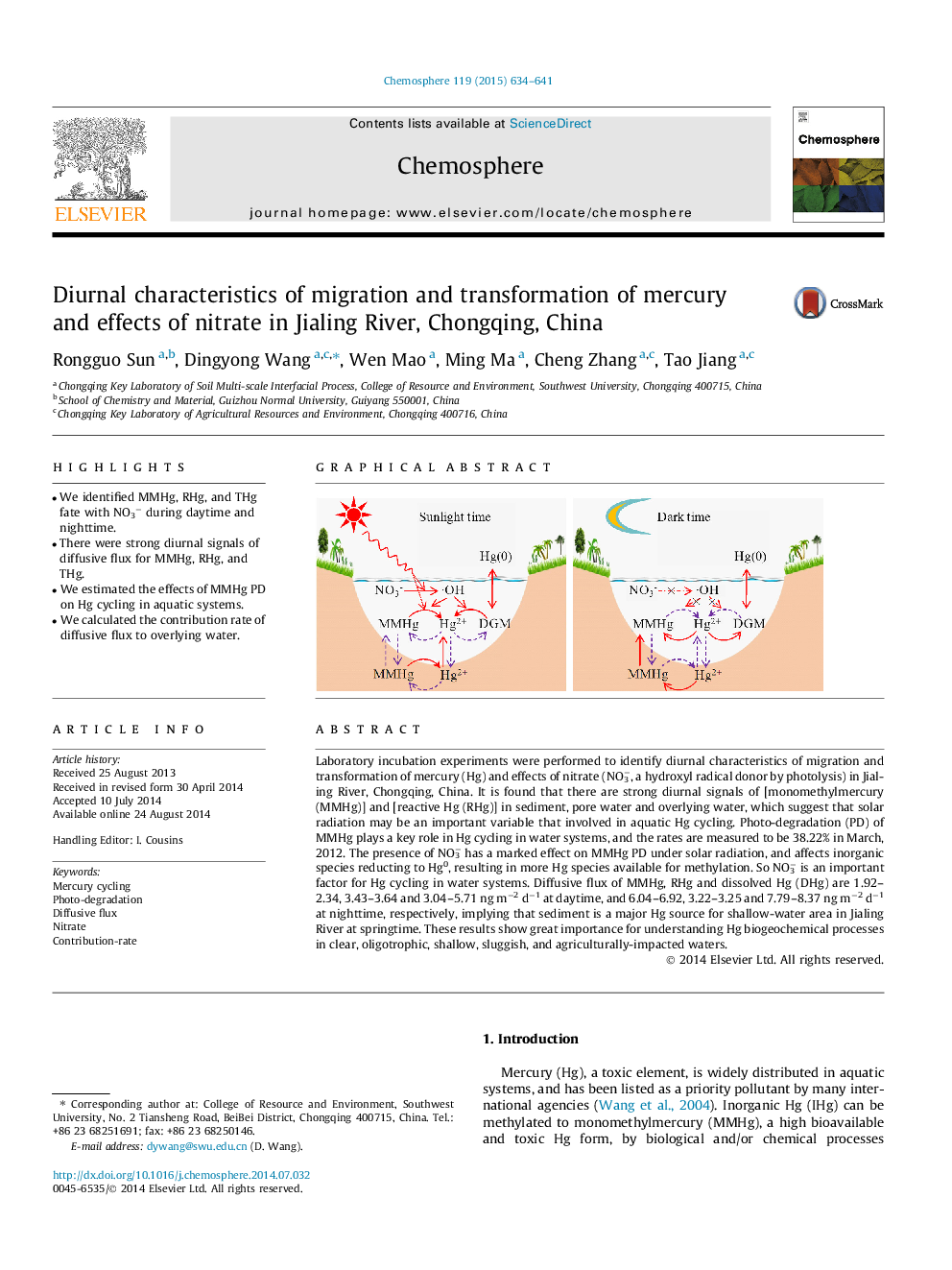| Article ID | Journal | Published Year | Pages | File Type |
|---|---|---|---|---|
| 4408676 | Chemosphere | 2015 | 8 Pages |
•We identified MMHg, RHg, and THg fate with NO3− during daytime and nighttime.•There were strong diurnal signals of diffusive flux for MMHg, RHg, and THg.•We estimated the effects of MMHg PD on Hg cycling in aquatic systems.•We calculated the contribution rate of diffusive flux to overlying water.
Laboratory incubation experiments were performed to identify diurnal characteristics of migration and transformation of mercury (Hg) and effects of nitrate (NO3−, a hydroxyl radical donor by photolysis) in Jialing River, Chongqing, China. It is found that there are strong diurnal signals of [monomethylmercury (MMHg)] and [reactive Hg (RHg)] in sediment, pore water and overlying water, which suggest that solar radiation may be an important variable that involved in aquatic Hg cycling. Photo-degradation (PD) of MMHg plays a key role in Hg cycling in water systems, and the rates are measured to be 38.22% in March, 2012. The presence of NO3− has a marked effect on MMHg PD under solar radiation, and affects inorganic species reducting to Hg0, resulting in more Hg species available for methylation. So NO3− is an important factor for Hg cycling in water systems. Diffusive flux of MMHg, RHg and dissolved Hg (DHg) are 1.92–2.34, 3.43–3.64 and 3.04–5.71 ng m−2 d−1 at daytime, and 6.04–6.92, 3.22–3.25 and 7.79–8.37 ng m−2 d−1 at nighttime, respectively, implying that sediment is a major Hg source for shallow-water area in Jialing River at springtime. These results show great importance for understanding Hg biogeochemical processes in clear, oligotrophic, shallow, sluggish, and agriculturally-impacted waters.
Graphical abstractFigure optionsDownload full-size imageDownload as PowerPoint slide
